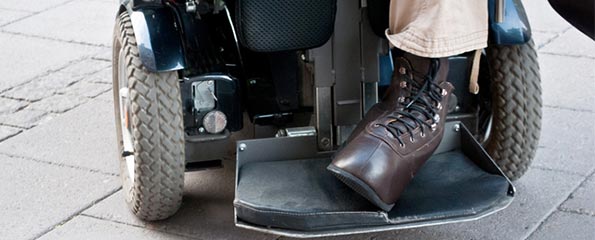Purpose
This study will examine the symptoms, course of disease and treatment of non-tuberculous mycobacterial (NTM) infections, as well as the genetics involved in these infections. Patients with NTM have recurrent lung infections and sometimes infections of the skin and other organs as well. They may also have curvature of the spine, barrel chest, and heart valve weakness. The study will compare the features of NTM with those of Job syndrome and cystic fibrosis, other diseases involving recurrent infections of the lungs and possibly other organs.
Official Title
Natural History, Genetics, Phenotype and Treatment of Mycobacterial Infection
Conditions
– Atypical Mycobacterium Infections- Cystic Fibrosis- Job’s Syndrome
Study Type
Observational
Study Design
Natural History
Further Details
Patients with diagnosed or suspected non-tuberculous mycobacterial infection, cystic fibrosis or Job syndrome may be eligible for this study. All participants will have a medical and family history, blood and urine tests, imaging studies that may include X-rays, computed tomography (CT) or magnetic resonance imaging (MRI) scans, and DNA and other genetic studies. In addition, all patients with Job syndrome and cystic fibrosis, and patients with NTM who have lung disease undergo the following procedures: – Scoliosis survey – X-rays of the spine to look for curvature or other abnormalities of the spinal column- Echocardiography – imaging test that uses sound waves to examine the heart chambers and valves- Electrocardiogram – measurement of the electrical activity of the heart- Pulmonary function tests – breathing tests to measure how much air the patient can move into and out of the lungs- Body measurements – measurements of height, weight, arm span, finger length, etc.- Joint function – assessment of joint mobility using different maneuvers to test flexibility of joints and ligaments- Examination of physical features that might be associated with NTM, such as high arched palate of the mouth, flat feet, or certain skin features – Dermatology (skin) examination for reactive skin conditions or other skin problems and possibly a skin biopsy (surgical removal of a small skin tissue sample for microscopic examination) – Interview with genetics specialistThese tests may require several days to complete. Patients with NTM will also be examined by a cystic fibrosis specialist and may have a sweat test. In addition, NTM patients will be asked to return to NIH every year for 5 years for follow-up tests, if medically indicated, including CT of the chest, scoliosis survey and examination by other specialists. The nontuberculous mycobacteria (NTM) are ubiquitous environmental organisms found in soil and water that rarely cause disease in humans. Since exposure to these organisms is universal and disease is rare, it can be concluded that normal host defenses are sufficient to prevent infection. It follows that otherwise healthy individuals that develop disease may have abnormal susceptibility or immune defects that permit infection with nontuberculous mycobacteria. The organisms that are most commonly encountered in clinical practice include Mycobacterium avium, and M. intracellulare [collectively known as the M. avium complex (MAC)], M. kansasii, M. fortuitum, M. abscessus, and M. chelonae. These organisms share significant structural and biochemical similarities with their more pathogenic relative, M. tuberculosis (MTB). Recognition of host factors that predispose or lead to NTM infection may have important implications for pathogenesis and therapeutic intervention, and may be applicable to the more virulent MTB. Identification of genetic or acquired susceptibility factors may lead to recognition of endogenous pathways that can be exploited therapeutically and to possible gene identification. Over the last two decades, three important observations have been made regarding the pathogenesis of nontuberculous mycobacterial infections. 1) In patients infected with HIV, nontuberculous mycobacterial infections often occur when the CD4+ T-lymphocyte number falls below 50/mm(3). This suggested that specific T cell products or activities were required for mycobacterial resistance. 2) An association was noted between pulmonary nontuberculous mycobacterial infections and a particular body habitus, predominantly in post-menopausal women (pectus excavatum, scoliosis, mitral valve prolapse). 3) Multiple defects have been found involving the interferon gamma synthesis and use pathways in patients with disseminated nontuberculous mycobacterial infection without HIV, suggesting this is a critical pathway for host defense against these organisms. We seek to better characterize the predisposition to mycobacterial infection. This study will specifically address several aspects of immune function and investigate the proposed link to body morphotype in the relevant population. Including patients with mycobacterial infections currently followed on other protocols who will enroll in this protocol, we anticipate 250 patients over 5 years. By collecting this information, we hope to provide insight into disease associations, infection susceptibility, and genetic predisposition to mycobacterial infection.
Study Start
Eligibility & Criteria
Genders Eligible for Study: Both Criteria INCLUSION CRITERIA:This protocol will study patients with mycobacterial infections, including those without previously identified predisposing disease processes as well as individuals with underlying malignancies.Patients with nontuberculous mycobacterial infections.Patients with acquired immunodeficiencies or tuberculosis may also be studied if relevant host defects are suspected.Patients must be referred to NIH with a diagnosis or suspicion of having mycobacterial infection, the Job syndrome, or Cystic Fibrosis.Male and female patients will be accepted without limitations due to age.Patients with nontuberculous mycobacterial infections without HIV infection will be considered for long-term disease management.For controls, we will include patients with the Job syndrome and Cystic Fibrosis (CF).
Total Enrolment
250
Contact Details
(Source: National Institute of Allergy and Infectious Diseases (NIAID), March 2004)
All content and media on the HealthEngine Blog is created and published online for informational purposes only. It is not intended to be a substitute for professional medical advice and should not be relied on as health or personal advice. Always seek the guidance of your doctor or other qualified health professional with any questions you may have regarding your health or a medical condition. Never disregard the advice of a medical professional, or delay in seeking it because of something you have read on this Website. If you think you may have a medical emergency, call your doctor, go to the nearest hospital emergency department, or call the emergency services immediately.







